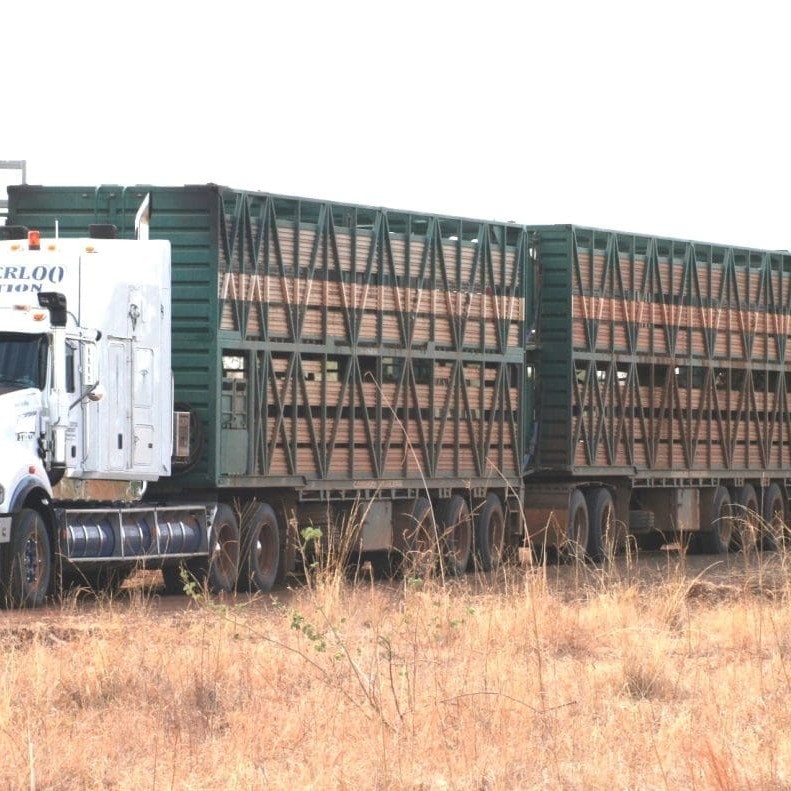 A survey into road transport trends in Australian agriculture has provided some valuable insight into the ownership and use of heavy vehicles within the livestock and other farm sectors, and how that is changing.
A survey into road transport trends in Australian agriculture has provided some valuable insight into the ownership and use of heavy vehicles within the livestock and other farm sectors, and how that is changing.
Just one of the points of interest was evidence of a shift from body trucks to articulated semis among livestock producers owning heavy vehicles surveyed in New South Wales and Queensland.
The research, commissioned by the Rural Industries Research and Development Corporation and released this month, was compiled primarily to provide guidance in government policy-setting issues such as transport infrastructure pricing and provision, transport regulations, and taxation policy.
The research project provides a range of insights into the profile of farm vehicle ownership and operations in Australia.
It found that there were about 71,000 vehicles that are classified as ‘primary producer owned’ heavy vehicles in Australia. That figure was significantly lower than some previous estimates, and highlights the lack of information available on heavy vehicle use in agriculture.
The survey of farm businesses estimated that there an estimated 204,000 total farm vehicles owned and operated by all farm businesses in Australia. This figure includes both light and heavy vehicles, but does not include agricultural machinery and tractors.
From this figure it was estimated that there were 87,000 heavy vehicles (greater than 4.5t gross) in use within the farm sector, covering both registered vehicles for use on public roads, and non-registered for on-farm use only. These figures do not include vehicles that are not owned by farmers, but are used to transport goods to and from farms.
Based on registration data obtained from State Governments, the report concluded that there were 71,260 registered vehicles classified as ‘primary producer-owned’ heavy vehicles in Australia.
The registration data from state governments also reveals that across NSW, Victoria, and Queensland, rigid ‘body’ trucks typically make up about 80 percent of all farm vehicle configurations, with a gross vehicle mass (GVM) of 4.5t or more. Articulated ‘semi’ trucks make up the remaining 20pc registered by farmers.
The survey looked at several farm sector groups in particular: beef (Qld and NSW), dairy, grain and horticulture.
It highlighted that agricultural industries are not ‘all the same’, and conclusions could not be drawn about transport in one agricultural sector based on averages from others. These characteristics are important to recognise when policies are being implemented by governments that affect the transport sector, such as transport infrastructure and road pricing, the report found.
In terms of the profile of farm vehicles, the survey of farmers across all four sectors found that:
- most farm businesses owned and operate between one and five farm vehicles (both light and heavy vehicles).
- almost all farm vehicles (both light and heavy) operated by farm businesses are owned, rather than leased. The percentage has increased from five years ago.
- farmers showed little knowledge of average fuel consumption used in their farm vehicles
- the majority (69pc) of farm vehicles are eight years old or older;
- More than 50pc of operators of articulated vehicles, B-doubles and road trains stated that they do not use one tied configuration – rather they change vehicle configuration according to their freight needs
- most vehicles travel around 38pc of their time on unsealed roads
- the vast majority of vehicles do not participate in any mass concessional schemes or permits
- 14pc of survey respondents stated that they have issues with vehicle access along their transport routes that constrain their business (such as mass and vehicle-type issues).
Among trends noted from the research was that, based on vehicle registration data obtained from NSW and Queensland, the number of rigid trucks registered has been declining over time, while the number of articulated vehicles has been rising. For example, Queensland has a total of 18,256 registered farm heavy vehicles. These include 15,719 rigid trucks and 2537 articulated ‘semi’ trucks. Since 2009, however, the number of rigid trucks in Qld has decreased 3pc, while the number of articulated trucks has risen by 12pc.
Reasons remain unclear, but it could be linked to larger economies of scale being sought in Queensland stock enterprises.
Livestock sector-specific findings:
As the livestock industry supply chain is easily the most extensive in Australia in terms of distance and geographical spread, the transportation used by the livestock industry is diverse, and contrasted significantly with other farm sectors.
Among livestock farmer segment survey findings:
- About 70pc of livestock operators owned either one or two registered vehicles. Numbers owning four or more fell to below 5pc. Most common types owned and operated by livestock farmers are light commercial vehicles and heavy rigid trucks.
- Livestock farmer-owned heavy vehicles (greater than 4.5t gross) averaged about 14,500km/year.
- More than 94pc of heavy vehicles on livestock farms were registered year-round – second only to dairy.
- 60pc of livestock farm vehicles were eight years old or more, with a further 15pc 5-8 years
- About 30pc of respondents planned to replace their vehicles within three years
- 39pc of livestock farmers in NSW/Qld regularly travel extensively on unsealed roads.
The full RIRDC report, “Road transport trends in Australian agriculture,” can be accessed here.
